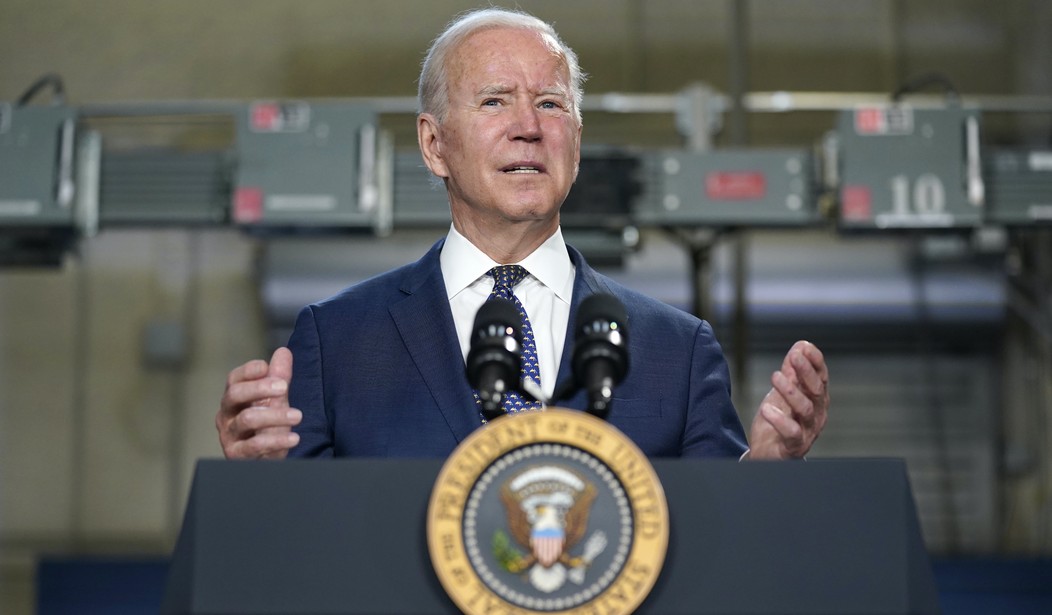Can you say … stasis? I knew you could! That’s a word that few expected to hear about the April jobs report. Economists expected to see a million jobs added, even higher than the 916,000 new jobs cited in the March jobs report from the Bureau of Labor Statistics. After all, April was the first full month in which the COVID-19 relief/stimulus bill was in full effect, and expectations were high for a massive positive reaction to the deluge of cash.
Instead, the BLS reported that the US economy added only a quarter of the jobs economists projected. Not only did the number turn out to be a pedestrian level of 266,000, the BLS recalculated the March report — and deducted nearly the same amount:
Total nonfarm payroll employment rose by 266,000 in April, and the unemployment rate was little changed at 6.1 percent, the U.S. Bureau of Labor Statistics reported today. Notable job gains in leisure and hospitality, other services, and local government education were partially offset by employment declines in temporary help services and in couriers and messengers. …
Both the unemployment rate, at 6.1 percent, and the number of unemployed persons, at 9.8 million, were little changed in April. These measures are down considerably from their recent highs in April 2020 but remain well above their levels prior to the coronavirus (COVID-19) pandemic (3.5 percent and 5.7 million, respectively, in February 2020).
Among the major worker groups, the unemployment rates for adult men (6.1 percent), adult women (5.6 percent), teenagers (12.3 percent), Whites (5.3 percent), Blacks (9.7 percent), Asians (5.7 percent), and Hispanics (7.9 percent) showed little or no change in April. (See tables A-1, A-2, and A-3.)
Among the unemployed, the number of persons on temporary layoff, at 2.1 million, changed little in April. This measure is down considerably from the recent high of 18.0 million in April 2020 but is 1.4 million higher than in February 2020. The number of permanent job losers, at 3.5 million, was also little changed over the month but is 2.2 million higher than in February 2020. (See table A-11.)
The BLS revised February upward, but March massively downward from its promising peak:
The change in total nonfarm payroll employment for February was revised up by 68,000, from +468,000 to +536,000, and the change for March was revised down by 146,000, from +916,000 to +770,000. With these revisions, employment in February and March combined is 78,000 lower than previously reported.
While revisions are a regular part of the BLS process, these seem rather more significant than the usual tweaks. In part that’s due the larger baseline numbers, but the changes in both months reflect an adjustment well into double-digit percentages in either direction. That’s somewhat disconcerting for those looking to present analysis and policy recommendations based on solid data.
Axios points out how disappointing these results are, although employing a bit of exaggeration:
It points to disappointing progress for the labor market’s recovery, even as the economy makes strides toward a full reopening. The number of jobs added in March was also revised downward from 916,000 to 770,000.
The gain in jobs in April was barely enough to keep up with population growth, let alone to recover from the pandemic’s layoffs.
It’s not quite that bad. Population growth is usually between two million to 2.5 million people a year. At a workforce participation rate of 64% (pre-COVID, roughly), we would need to add 133,000 jobs a month to keep pace with population growth. The April result doubles that rate.
However, the pace of population growth is a concern for an economy in normal operation. The concern now isn’t population growth, but the massive overhang of workers drawing pandemic unemployment benefits. That amounts to over 13 million people who exist in a quasi-category, a twilight between being in or out of the official workforce. We need to generate a million new jobs a month for over a year to eliminate that overhang.
We didn’t hit that mark this month. And now we find out that we didn’t hit it last month, either, despite spending two trillion dollars in relief and stimulus. Instead exponential growth, we got a decent maintenance increase.
For those working, wages did bounce up significantly after initially dropping in March:
In April, average hourly earnings for all employees on private nonfarm payrolls increased by 21 cents to $30.17, following a decline of 4 cents in the prior month. In April, average hourly earnings for private-sector production and nonsupervisory employees rose by 20 cents to $25.45. The data for April suggest that the rising demand for labor associated with the recovery from the pandemic may have put upward pressure on wages.
Oddly, the New York Times emphasized that wages hadn’t been rising before the report went public:
As the economy fitfully recovers, there are divergent accounts of what’s going on in the labor market. Employers, particularly in the restaurant and hospitality industry, have reported scant response to help-wanted ads. Several have blamed what they call overly generous government jobless benefits, including a temporary $300-a-week federal stipend that was part of an emergency pandemic relief program.
But the most solid evidence of a real shortage of workers, economists say, is rising wages. And that is not happening in a sustained way.
As Jerome H. Powell, the Federal Reserve chair, said at a news conference last week: “We don’t see wages moving up yet. And presumably we would see that in a really tight labor market.”
Wages are a lagging indicator, however. It takes time for the rise to show up after economic conditions change. This could be a one-month blip, or it might indicate that job creation has stalled because too many existing jobs remain unfilled. And that problem is a direct result of the incentives created by the relief bills passed by Congress over the past year — incentives that pay people more to stay home rather than go to work. People are not lazy, but they aren’t foolish either; if they get paid more not to take a job than to take one, many will follow the economic incentives.
Former Obama advisor Jason Furman hinted at this in his analysis:
“I think this is just as much about a shortage in labor supply as it is about a shortage of labor demand,” said Jason Furman, an economist at Harvard University and a former Obama administration advisor. “If you look at April, it appears that there were about 1.1 unemployed workers for every job opening. So there are a lot of jobs out there, there is just still not a lot of labor supply.”
The battered leisure and hospitality industry saw the biggest hiring gains, adding 331,000 workers though that still left the industry nearly 2.9 million shy of where it was before the pandemic.
However, the lack of available workers is a “crisis,” said Carlos Gazitua, president and CEO of Sergio’s Restaurants in Southern California.
“We’ve increased wages. We have about three different staffing agencies that are constantly looking for people,” Gazitua said. “Other restauranteurs are walking around neighborhoods passing out flyers. The heroes in our communities are the people currently working for you and me. These people are burnt out.”
Until we change the incentives and get people back to work, the explosive economic growth we should expect in America’s grand reopening will fizzle out.







